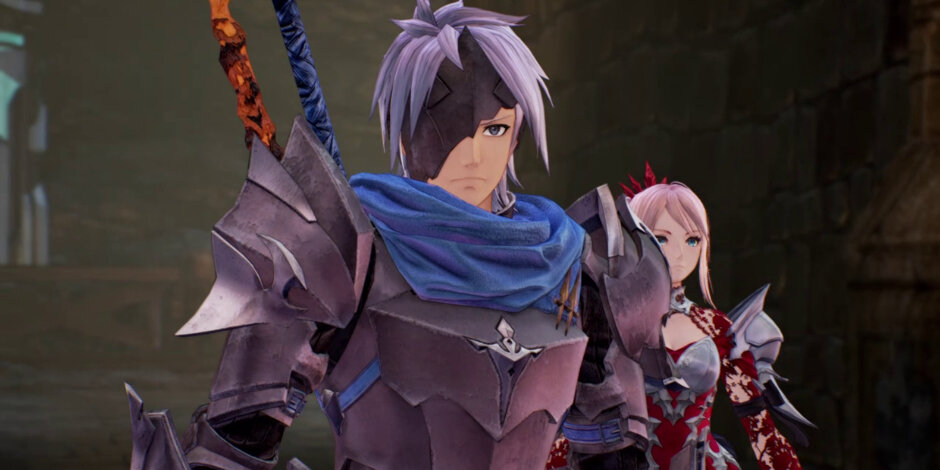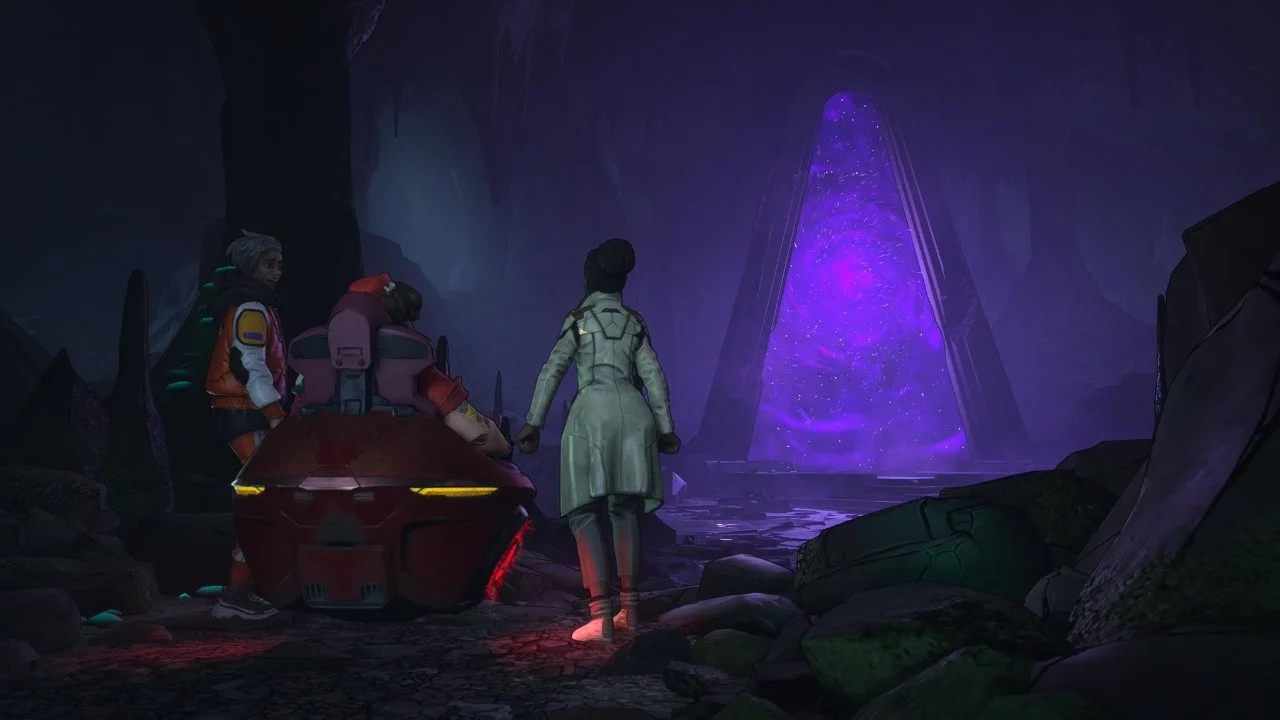PlayStation 5 Review Code Provided By Bandai Namco
Tales of Arise made a splash when it first debuted at E3 2019, featuring a new art style, a grand world, and flashy gameplay all came together in the initial trailer to set a strong first impression. Now, after a lengthy delay that pushed the game’s release out of 2020 entirely, Tales of Arise is finally set to release and give players the chance to explore its world and experience its story for themselves.
Unfortunately, Tales of Arise doesn’t quite live up to that original first impression it made over two years ago. While it does sport some notable improvements over previous games in the franchise, it makes concessions in other areas that ultimately diminish the final product.
Story
Tales of Arise tells the story of Dahna and Rena, two planets that at one time lived together peacefully. Hundreds of years before the game’s story begins the people of Rena invade Dahna and enslave its entire population and use them to harvest the planet’s natural resources. If this is starting to sound a little familiar to you, don’t worry; you’re not alone.
Enter Iron Mask, a man with no memory and a… well, iron mask obscuring his entire face. He soon embarks on a journey with a young Renan woman named Shionne to do… something. Regain his memory? Save Dahna? Tales of Arise tells its story in such broad strokes that it’s genuinely difficult to understand anyone’s motivations at any given moment.
You’ll spend the first 20 to 25 hours of the game struggling with this sensation even as you pick up new party members and encounter villainous foes. There’s barely any more reason for your journey than “bad guys are bad;” take down one boss and it’s on to the next area for your next scheduled match.
It doesn’t help that each of the Renan Lords you’re tasked with defeating are given roughly the same character development as background townsfolk. They’re sufficiently evil that you never question the morality of taking them down, but they never rise above the simple trope they’re allotted. Backstory for any of them isn’t provided until long after they’re gone, and even then it’s not much.
There are a few mysteries that suggest there’s more to the story than meets the eye, but they don’t quite coalesce in any meaningful way. The revelation around Iron Mask’s true identity doesn’t get the breathing room it deserves and much of the writing keeps the protagonists guessing at story beats I’d predicted hours earlier.
The writing might be one of the worst offenses in Tales of Arise; not because it’s bad but because it’s largely superfluous. The main characters will talk in circles, reiterating lessons or morals they’ve already spent hours pontificating about. On more than one occasion characters will just aggrandize over one another for several minutes, further dragging out an already overlong experience.
Gameplay
What Tales of Arise lacks in meaningful storytelling it makes up for with its changes to the Tales combat. The biggest changes it makes are also the most appreciated; battles are more enjoyable and rewarding, allowing for a better grinding experience. There’s a clear feedback loop between battle and progression, though a few of these systems are less useful than they initially seem.
Combat itself is a blast; once you have a full team you’ll see different elemental effects and colorful explosions flying around the battlefield at any given moment. Different prompts will pop up that cue you to initiate different techniques to interrupt enemies or pull off impressive finishers.
One of the most enjoyable parts of battle is navigating enemy disrupts; different monsters’ attacks can be halted by calling in a party member at just the right moment. In some cases, you can even turn an opponent’s attack back on them.
You can also break an enemy’s guard allowing you to juggle them in the air like you’re in a fighting game. Keep pressing them with Artes (special abilities) or regular attacks and they won’t be able to recover until you’ve knocked off a good chunk of health or taken them out entirely.
The changes made to combat and healing Artes are at the heart of this faster, more versatile combat system. Because each set of abilities is tied to different meters I wasn’t constantly worried about running out of Magic Points (MP) or grinding for hours to stockpile restorative items. It enabled me to focus on just enjoying the nuance of the game’s combat.
While the moment-to-moment action of combat is fun the progression systems aren’t always as interesting to invest in. While they’re not technically bad, they never feel entirely necessary outside of the expected “numbers go up” motif common to JRPGs. As the game goes on it starts to feel like both equipment and skill upgrades are less about building your character and more about following a prescribed path.
Tales of Arise doesn’t really want you to concern yourself too much with how to find or craft the most powerful equipment in the game: you will stumble on it with relative ease. And don’t worry about choosing equipment based on what stats you want to be raised; each new piece will give you a boost across the board, so no balancing necessary.
The game does offer a robust accessory system that allows you to make some customizations to your team. Immunities to ailments, stat boosts, and even increased item drop rates can all be mixed and matched depending on the rarity of the material, and there’s even a way to swap abilities between accessories that unlocks later on in the game.
The other side of progression is the skill tab where each character can upgrade their skills via a selection of different, unlockable titles. While initially very cool to play around with, it quickly becomes apparent that a large portion of these upgrades only apply if the player is directly controlling the character in question. This was a bit of a letdown as I ended up sticking with one character for the majority of my playthrough.
Audio and Visuals
Unfortunately, the performances don’t do much to pick up the slack of the failed writing. The voice acting is passable at best and often slips beyond annoying to sound downright silly. Facial animations are a huge miss as well, sporting some of the most distracting unsynchronized English dubbing I’ve ever seen.
Not only that but the emotions that the voice actors portray are rarely conveyed on the character model’s faces, creating an awkward disconnect between what’s being said and how the character actually feels. It’s at its worst during the series trademark skits, which used to include anime-style emotive expressions for characters that are sorely missed in this latest entry.
What Could Be Better
The story is where Tales of Arise falters as it never really gave me a chance to connect with the tale it was trying to tell. I may just be approaching this game with a sense of nostalgia, but older titles in the Tales franchise have delivered measured, well-paced narratives that provided strong character motivations and performances.
A more well-rounded roster of secondary characters could have helped in this regard. The only characters we see with any regularity are the core cast, and even they aren’t given much development. The game could also have benefited greatly from more time spent building up its villains, many of whom barely make an impression before vanishing entirely.
And while the visual improvements overall are remarkable, the character models have lost much in that transition. Even just transplanting those anime-style facial expressions during skits or other humorous scenes would have gone a long way toward making the main cast of characters more likable.
Verdict
I ultimately came away disappointed from my time with Tales of Arise, though that may have had more to do with my expectations for the game than anything else. The narrative failings, lackluster dialogue, and uninspiring characters drowned out an otherwise wonderful gameplay experience. I might still recommend this to fans of JRPGs, but there are many better titles in the genre I would rather go to first.





















